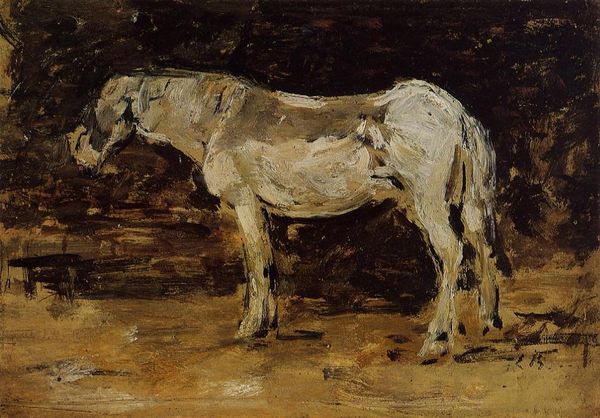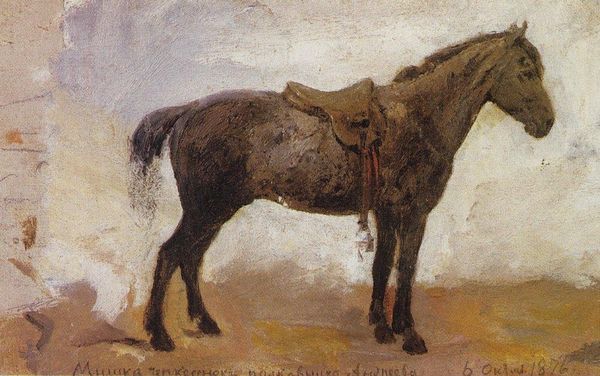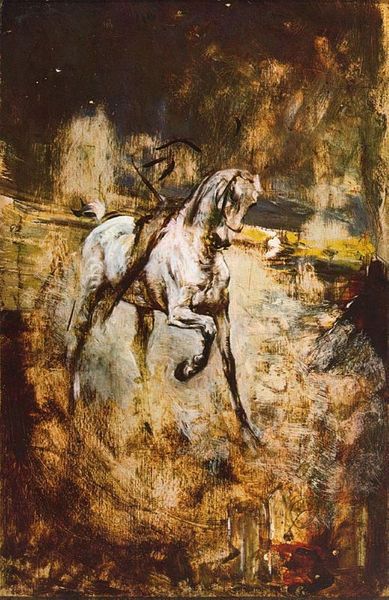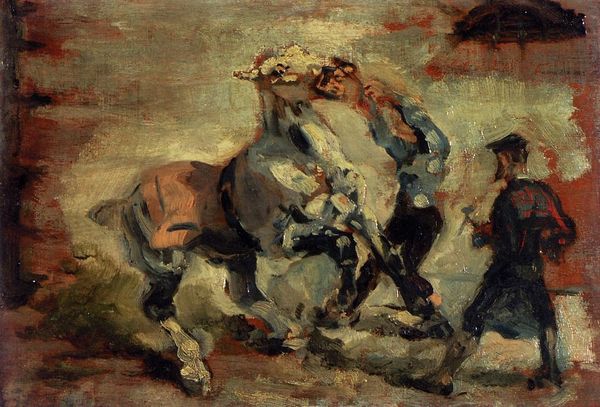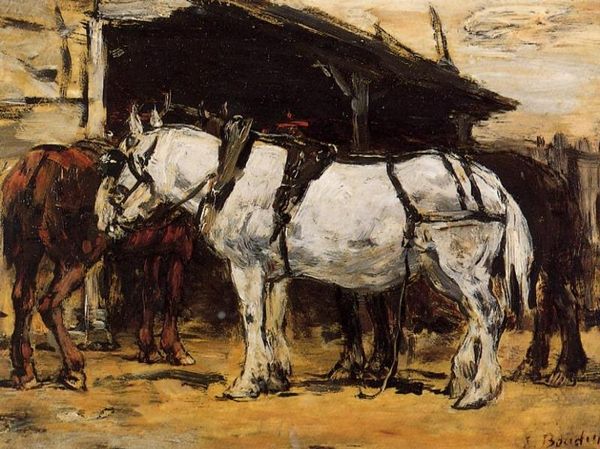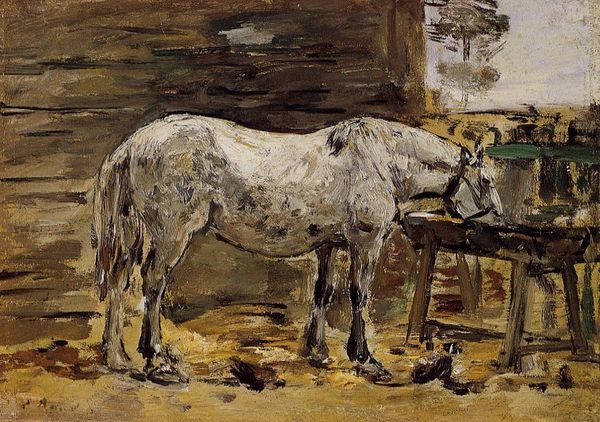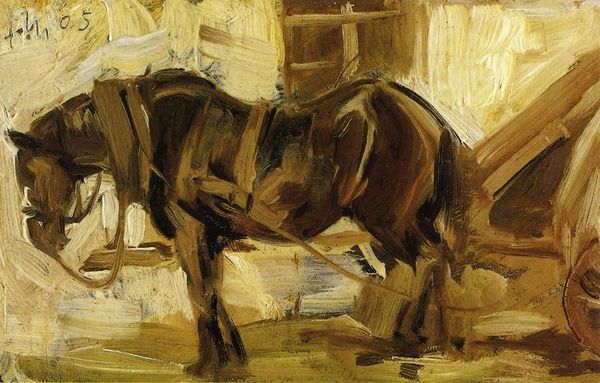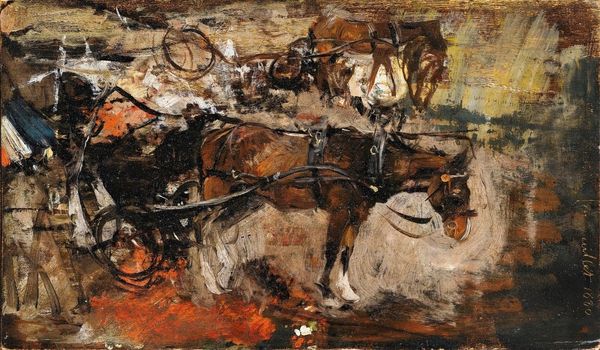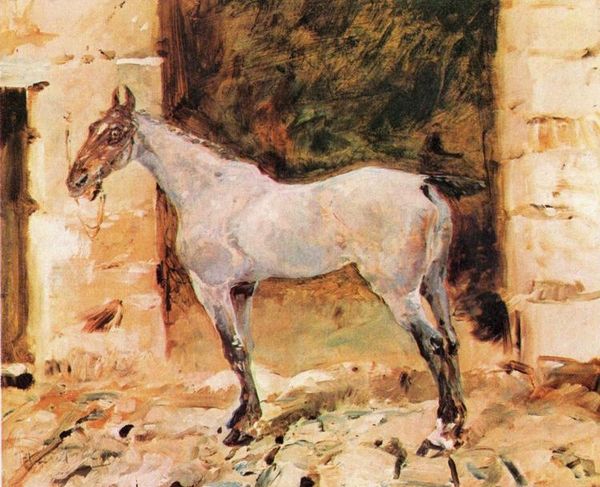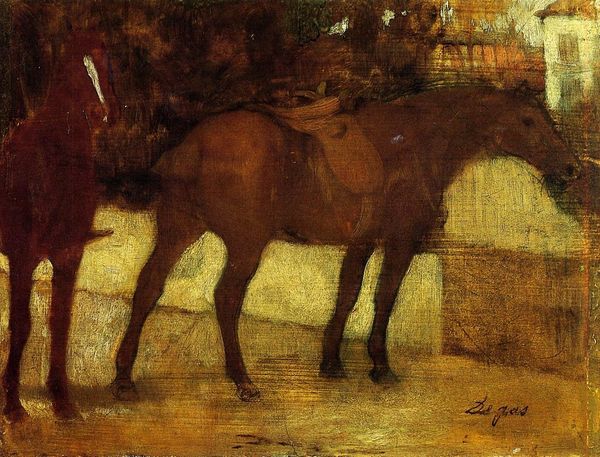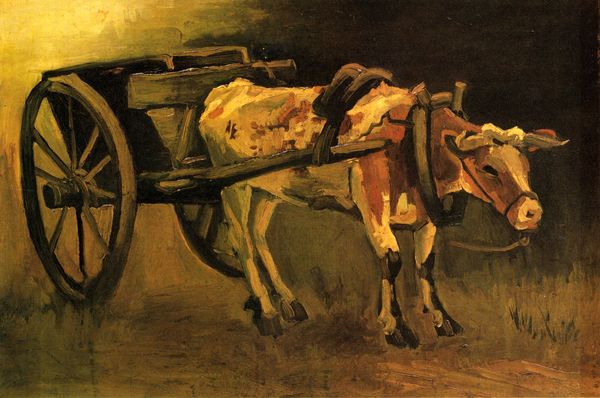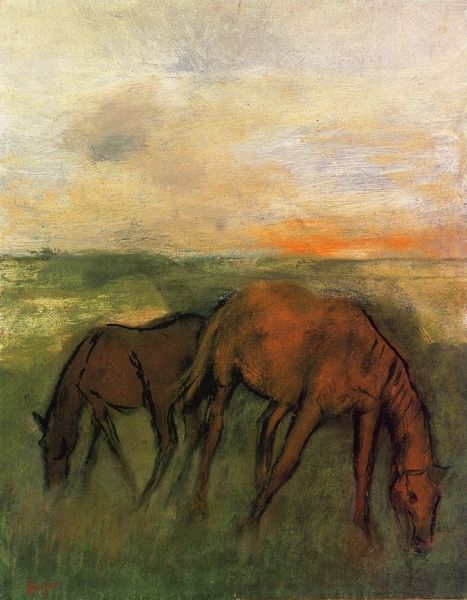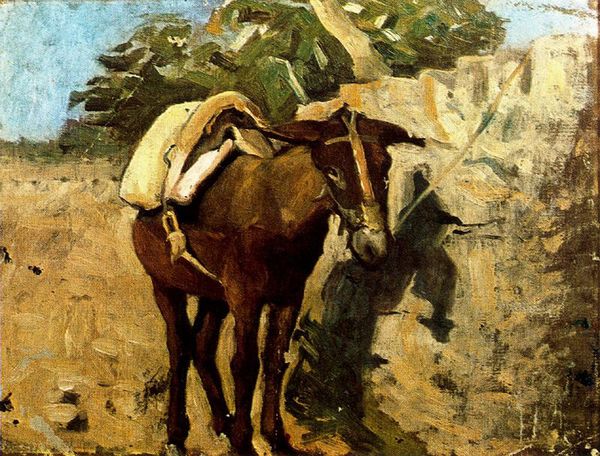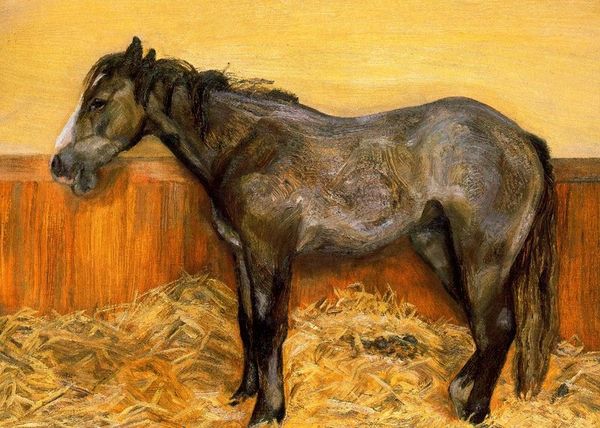
painting, oil-paint, impasto
#
portrait
#
animal
#
painting
#
oil-paint
#
landscape
#
figuration
#
oil painting
#
impasto
#
mixed media
#
realism
Copyright: Public domain US
Editor: This oil painting, “Mule,” was created by Pablo Picasso in 1899. The impasto technique really stands out to me. It makes the subject, the mule, almost seem to emerge from the earth. What's your perspective on it? Curator: Considering its place within art history, "Mule" seems to signal a bridge between traditional realism and Picasso's later, more radical experiments. How does the image speak to the social role of animals, particularly mules, in late 19th-century Spain? These animals weren't merely beasts of burden; they were essential to the economic and social fabric of rural communities. Does Picasso humanize the animal in any way, imbuing it with a sense of dignity? Editor: That's fascinating. I hadn't really considered the social aspect. I suppose the muted tones contribute to a sense of solemnity. The mule doesn't seem idealized; it looks like it's been hard at work. Do you think this painting has a political message? Curator: It’s subtle, but definitely present. Look at the art establishment at the time. Here is Picasso, a young artist, depicting a working animal with the same seriousness others would reserve for nobility or religious figures. That's a statement in itself, about whose stories are worth telling, and whose lives are worth representing. It hints at the democratizing potential of art. Editor: That really makes you think about the choices artists make and how they reflect society. Curator: Precisely! And this early work offers a glimpse into Picasso’s developing awareness of art’s potential for social commentary. Editor: I'll definitely look at early Picasso differently from now on. Thanks for opening my eyes to that context. Curator: My pleasure. It's always enriching to consider how art reflects and shapes the world around us.
